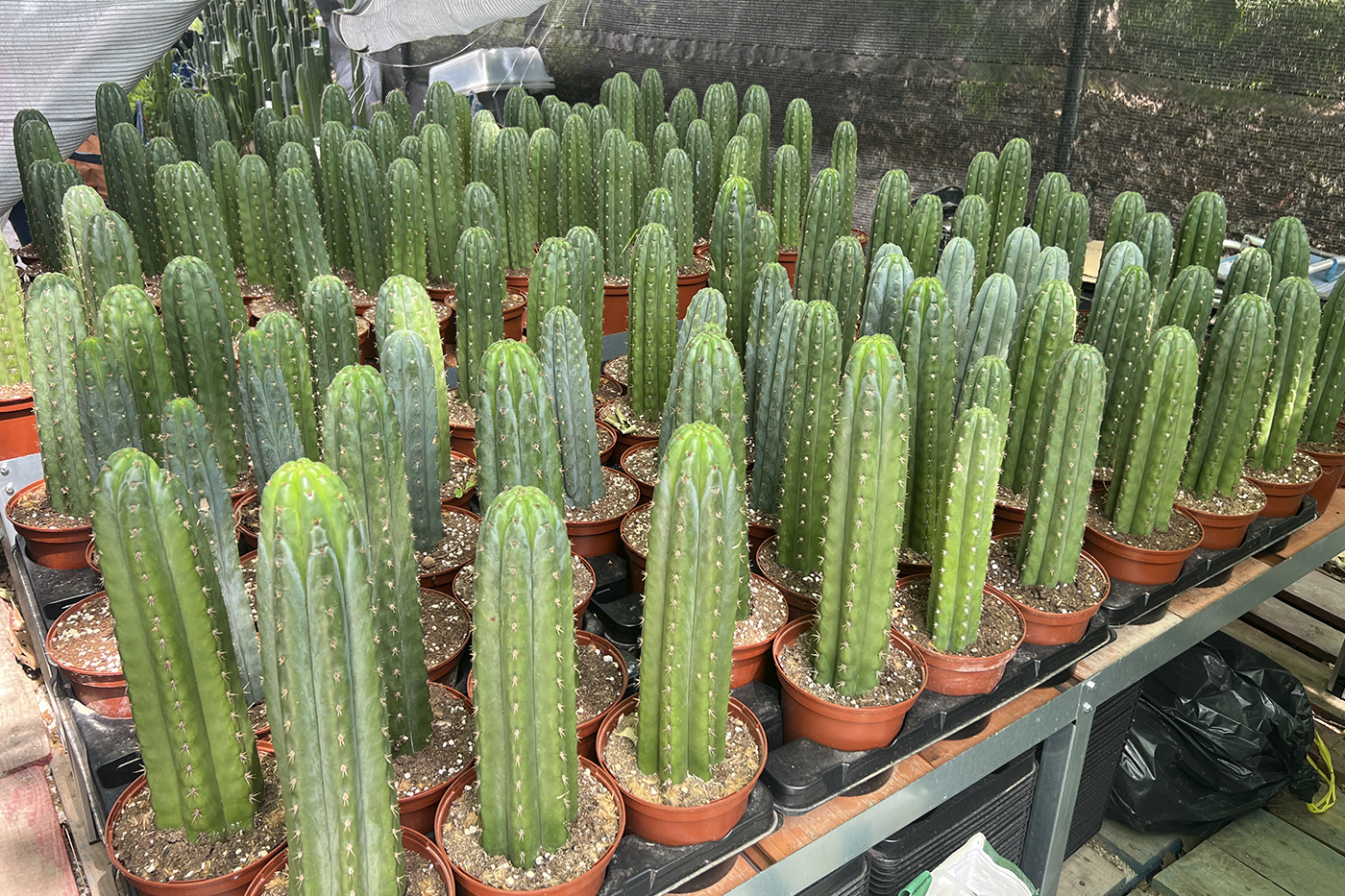Trichocereus cacti, especially Trichocereus pachanoi, are resilient and beautiful plants that require careful handling during transport to avoid damage and stress. Below is a complete guide to safely and effectively transporting your Trichocereus, ensuring a smooth transition and preserving the plant’s health.
1. Preparation Before Transport
Before moving your Trichocereus, it’s essential to prepare it properly:
1.1 Watering
Water the cactus about one week prior to transport. This ensures the plant is well-hydrated, which is crucial for maintaining health during the move. However, avoid watering right before transporting, as excess moisture can lead to complications such as root rot.
1.2 Plant Health Check
Inspect the cactus for pests or signs of disease. If any issues are detected, treat them before moving the plant to avoid spreading or worsening the problem.
1.3 Tools You’ll Need
Prepare the necessary tools ahead of time:
-
Pruning shears (in case you need to cut roots or stems)
-
Gardening gloves
-
Plant supports
-
An appropriate pot or transport container
2. Transport Methods
There are different ways to transport a Trichocereus, depending on its size and current setup.
2.1 Transporting in Its Pot
If the cactus is small and already potted, place the pot inside a sturdy box with enough room for padding. Make sure the plant is stable and well-protected to prevent it from tipping over or moving during transit.
2.2 Temporary Transplanting for Large Specimens
For larger cacti, it may be necessary to remove the plant from its pot:
-
Prepare the workspace: Lay down a tarp or newspaper to catch loose soil.
-
Moistening the soil: Lightly water the substrate a day before to ease removal.
-
Carefully extract the cactus: Tilt the pot and gently tap the sides to loosen the soil. Use gloves or a thick cloth to avoid injury from spines.
-
Wrap the cactus: Use bubble wrap or soft fabric to protect the arms and prevent bruising during transport.
3. During Transport
3.1 Temperature Control
Keep the cactus in a stable, moderate environment. Avoid extreme heat or cold, which can stress or damage the plant. If possible, transport it during the cooler hours of the day.
3.2 Securing the Plant
Ensure the cactus is secure inside the vehicle. Use boxes or supports to keep it from moving or falling. Avoid placing heavy objects on or near the plant.
4. Replanting at Its New Location
4.1 Post-Transport Check
Once you arrive, inspect the cactus for any signs of damage or stress. If the plant looks affected, give it time to recover in a shaded area with indirect light before repotting.
4.2 Replanting
If you removed the plant from its original pot, choose a well-draining pot and cactus soil mix for replanting. Gently place the cactus in the new soil, ensuring not to damage the roots.
5. Post-Transport Care
Give your Trichocereus some time and care after the move:
-
Do not water immediately: Wait at least one week before resuming watering to allow the plant to adapt.
-
Light exposure: Start with indirect sunlight, gradually increasing to direct exposure as the plant adjusts.
Conclusion
Transporting a Trichocereus doesn’t have to be stressful—for you or the plant. By following the right steps, you can ensure a smooth and safe move, preserving the health and beauty of your cactus. Take your time, plan carefully, and your Trichocereus will thrive in its new home.




